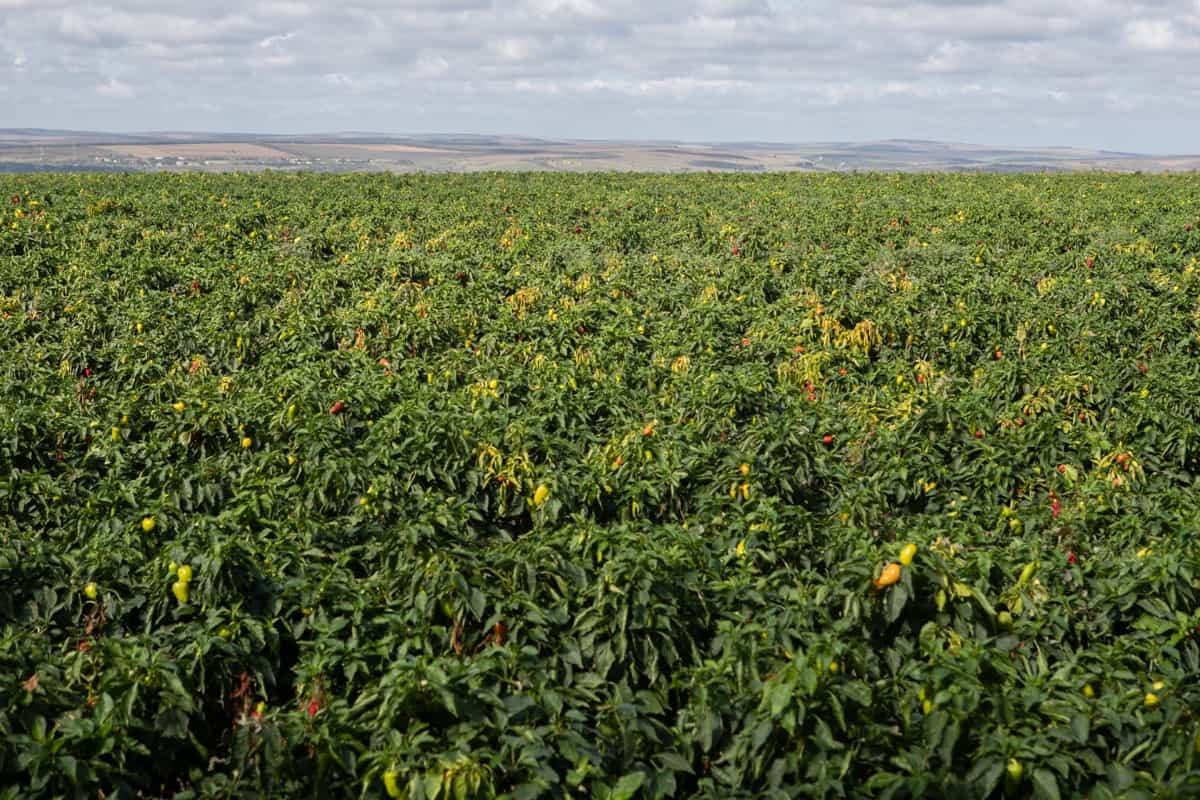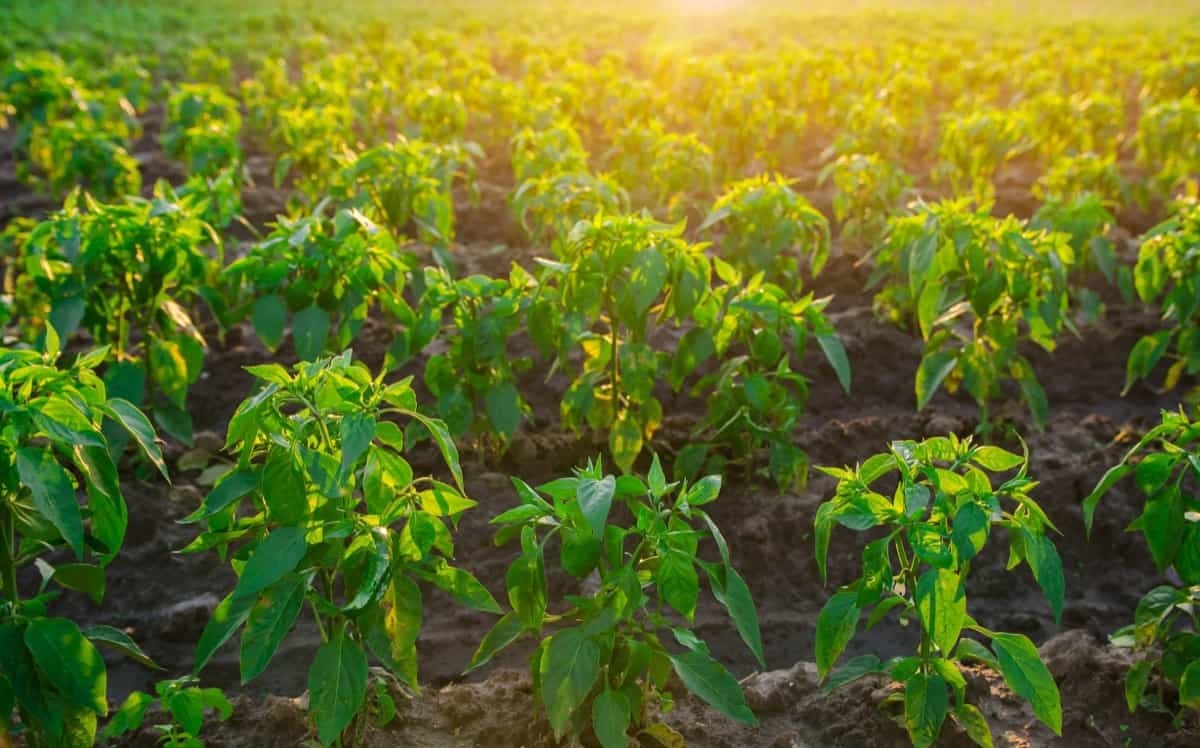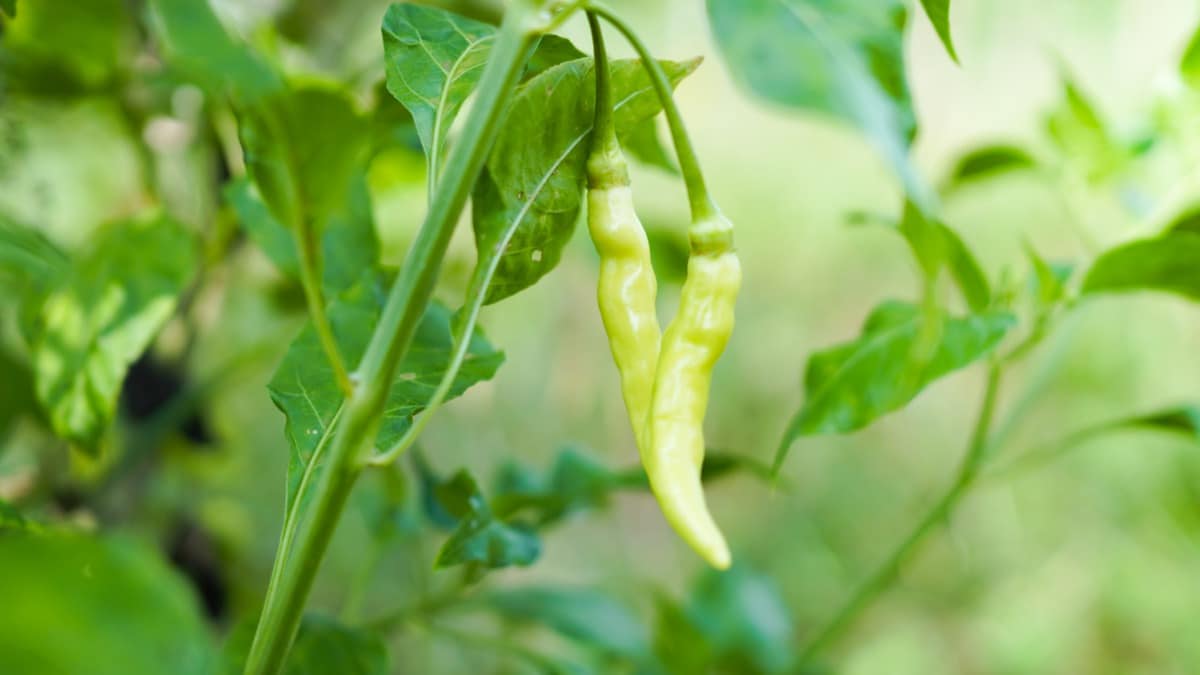Growing Banana Peppers is a great way to add flavor to your cooking without buying them from the store. Whether you grow them in pots or directly in the ground, you must consider all the considerations when growing Banana Peppers. When selecting a Banana Pepper plant, choosing one that is disease-resistant and has been grown using organic methods is important.

Selecting a plant that is the right size for your garden or pot is also important. Banana Peppers can range from 6 inches to 2 feet tall, so select a plant that fits your available space. From proper soil requirements and fertilizing schedules to harvesting procedures and storage practices, understanding what goes into growing Banana Peppers will help ensure your success with your crop.
How to Grow Banana Peppers from Seed in Pots or Ground
Types of Banana Peppers
Sweet Banana Peppers
Banana Peppers are typically yellow or green and range from mild to hot in terms of spice. Banana Peppers are popular in many dishes, such as salads, pizzas, and sandwiches.
Hot Banana Peppers
One of the most popular types of Banana Peppers is the Hot Banana Pepper. These peppers are small and have a thin skin that is easy to peel. They are typically yellow or green but can also be red or orange. The flesh of these peppers is firm and crunchy with a mild to moderate heat level.
Hot Hungarian Wax
Hot Hungarian Wax Peppers are a type of Banana Pepper that is typically bright red or yellow. As its name suggests, this type of pepper is quite spicy, with a heat level ranging from mild to very hot. If you’re looking for a little spice, this is the pepper.
Climate Suitable for Growing Banana Peppers
Banana Peppers can be grown in various climates but thrive in warm weather. You can grow Banana Peppers in pots and on the ground if you live in an area with cool winters and hot summers. However, if you live in very cold winters, growing Banana Peppers in pots is best to bring them indoors when the temperature drops.
In case you missed it: Best Tips for Making Pepper Plants Hotter: Great Ideas for Beginners

To grow Banana Peppers, you must ensure they get enough light. They need six hours of sunlight daily, so if you’re growing them indoors, you must place them near a sunny window. Banana Peppers will also do well in a greenhouse or under grow lights. Provide your Banana Pepper plants with consistent moisture by watering them when the soil feels dry.
Water Requirement for Growing Banana Peppers
To grow Banana Peppers, you must provide them with a steady water supply. If you are growing them in pots, you must water them more frequently than in the ground. Banana Peppers require at least 1 inch of water per week. The best way to water Banana Peppers is with a soaker hose or drip irrigation system. If you’re growing Banana Peppers in pots, water them regularly and do not let the soil dry out.
It’s also good to fertilize your plants every few weeks with a liquid fertilizer or compost tea. When growing Banana Peppers in the ground, ensure the soil is moist but not soggy. If you have a lot of rain, you may not need to water your plants as often. However, if the weather is dry, you must water more frequently. Mulch your plants can help retain moisture in the soil and prevent evaporation.
Soil Requirement for Growing Banana Peppers
Banana Peppers are not challenging to grow, but there are a few things to keep in mind regarding their soil requirements. Banana Peppers are not demanding regarding soil requirements and will do well in most garden soils if the pH is between 6.0 and 7.0. However, they prefer slightly sandy, well-drained soil high in organic matter. If your soil is heavy, amend the soil with compost to improve drainage and aeration.
Banana Peppers also appreciate a steady supply of nutrients, so be sure to fertilize regularly throughout the growing season. You can use an all-purpose or specialty chili pepper mix in potting mixes. Make sure the mix is well-draining and contains plenty of organic matter. You can also make your potting mix by combining equal parts garden soil, peat moss, and perlite or sand.
In case you missed it: How to Grow Ghost Peppers from Seed: At Home, in Pots, Raised Beds, Terrace, and Backyard

Germinating Banana Pepper Seeds in Pots
If you’re looking for a bit of spice in your life, Banana Peppers are the way to go. These peppers pack a punch, but they’re also sweet and flavorful. If you want to grow your Banana Peppers, it’s easy to do in pots or on the ground. Banana Peppers will do well in a pot at least 12 inches wide and deep. If you are growing multiple plants, you will need a larger pot. Choose a pot that has drainage holes to prevent the roots from rotting. Banana Peppers can be planted as early as two weeks before the last frost date in your area.
To plant Banana Pepper seeds, fill your pots or planting area with potting or garden soil and add a layer of peat moss. Then, sow your seeds about 1/2-inch-deep and cover them with more potting or garden soil. Until seedlings emerge, you should water well and keep the soil moist. Banana Peppers will germinate in 7-10 days at a soil temperature of 16 to 30°C. Once they’ve germinated, they can be transplanted outdoors.
Germinating Banana Pepper Seeds in Grounds
Pick a sunny spot in your garden that has well-drained soil. Prepare the soil and remove any rocks or debris. Create small mounds of soil about 1 inch high, spacing them about 12 inches apart. Plant 3-4 seeds in each mound and lightly cover them with soil. Water the area well, ensuring not to overdo it, as this can cause the seeds to rot. Keep an eye on the mounds and water as needed until the seedlings emerge, which should be within 7-10 days. Once they have sprouted, thin out the seedlings so that only the strongest one remains in each mound.
Banana Pepper Plant Care
Fertilizer Requirement for Growing Banana Peppers
Banana Peppers require little fertilizer, especially if growing them in pots. Use a balanced fertilizer such as 10-10-10 at half strength every two weeks. If you are growing Banana Peppers in the ground, they will need a little more fertilizer. Use a balanced fertilizer such as 10-10-10 at full strength every four weeks. Apply the fertilizer to the soil around the base of the plants every four weeks during the growing season. Be sure to water the plants regularly so that the fertilizer has a chance to work its way into the roots.
In case you missed it: 16 Common Banana Tree/Plant Problems: How to Fix Them, Solutions, and Treatment

Staking Banana Pepper plants
When it comes to staking Banana Pepper plants, there are a few things you need to keep in mind. You want to ensure the stake is tall enough not to fall over when the plant gets big. You want to ensure that the stake is strong enough to support the weight of the plant. You want to ensure the stake is placed in the ground so it won’t move around when the wind blows. You want to ensure the stake is placed where the plant will get plenty of sunlight.
You want to ensure the stake is placed in an area with good drainage. You want to ensure the stake is placed in an area with no chance of flooding. You want to ensure the stake is not placed too close to other plants, so they don’t compete for resources. You want to ensure the stake is not placed too close to any structures so they don’t interfere with the plant’s growth. You want to ensure the stake is not placed too close to any power lines so they don’t pose a safety hazard.
Banana Pepper Plant Care In Winter
Banana Peppers need extra care to stay healthy when the weather cools in autumn. Banana Peppers like it warm, so if the temperature drops too low, they may experience stress. If possible, try to keep them indoors or in a greenhouse where they can stay warm. Banana Peppers need moist soil to thrive, so make sure you’re watering them at least once a week (more if it’s particularly dry). Fertilize them every few weeks. A good quality vegetable fertilizer will help keep Banana Peppers healthy and productive all winter.
In case you missed it: Growing Peppers from Seed to Harvest: For Bell Peppers, Chilli Peppers, Spicy/Hot Peppers, Sweet Peppers, and Jalapeno Peppers

Pruning Banana Pepper Plants
Pruning your Banana Pepper plants is essential to keep them healthy and productive. Peppers are a heavy-feeding crop, so they must be pruned regularly to encourage new growth and prevent them from becoming leggy and overgrown. Cut back any dead or diseased leaves and stems to prune your Banana Pepper plants.
Then, trim back any long; straggly stems to promote bushier growth. Finally, cut back the main stem by a third or fourth to encourage side branching and more peppers. Pruning your Banana Pepper plants may seem like a lot of work, but it’s worth it for the bigger, healthier plants and bigger harvests you’ll get in return.
Pests and Diseases of Banana Peppers and Their Control
Insect pests include aphids, caterpillars, whiteflies, and mites. You may control these pests with insecticidal soap or neem oil. Banana Peppers are susceptible to several diseases, including bacterial leaf spot, blossom end rot, and fusarium wilt. Proper prevention and control measures can help reduce the incidence and severity of these diseases. Bacterial leaf spot is a common disease of Banana Peppers.
Symptoms include small, dark brown spots on the leaves, which may coalesce to form large necrotic areas. Control measures include removing infected leaves, avoiding overhead watering, and using a copper-based fungicide. Blossom end rot is another common disease of Banana Peppers. Small, dark brown spots on the blossom end of the fruit characterize it. The spots enlarge and turn black as the fruit matures.
Control measures include ensuring adequate calcium in the soil, avoiding excessive fertilizer application, and harvesting mature fruit promptly. Fusarium wilt is a serious disease of Banana Peppers that can cause plant death. Symptoms include yellowing of leaves followed by wilting and death of plants. This disease has no chemical control, so prevention is the best control method. Cultural practices such as crop rotation and resistant varieties can help prevent fusarium wilt.
Harvesting Banana Peppers
Banana Peppers are usually yellow or red when ripe and measure between 3 and 6 inches in length. The most common way to harvest Banana Peppers is to pick them by hand when they are ripe. You can tell when pepper is ripe by its color; it should be a deep yellow or red. Peppers can also be harvested using shears or knives. When harvesting Banana Peppers, wear gloves to protect your hands from the chili oils. Also, make sure to wash your hands thoroughly after handling the peppers.
In case you missed it: 17 Common Pepper/Chili Plant Problems: How to Fix Them, Solutions, and Treatment

Conclusion
Banana Peppers are a great addition to any garden and can be grown in pots or on the ground. If you’re growing them in pots, choose a pot at least 12 inches deep, so the roots have plenty of room to grow. Banana Peppers need full sun and well-drained soil to thrive, so water them regularly and fertilize them every few weeks.
When the peppers are about 6 inches long, they’re ready to harvest. If you want to grow Banana Peppers, you can do so in pots or on the ground. Whichever method you choose, provide your plants with plenty of sunlight and water. With some care, you can enjoy fresh, homegrown Banana Peppers all season long.
- How to Grow Tomatoes Organically at Home: A Comprehensive Guide
- Organic Gardening on a Budget: Low-Cost Methods and Materials
- Gongura Seed Germination and Planting Methods
- Cabbage Seed Germination and Selection
- Broccoli Seed Germination and Selection
- Asparagus Seed Germination and Variety Selection
- Seasonal Flower Gardening: Best Practices for Spring, Summer, Fall, and Winter
- How to Grow Hibiscus from Flower
- Plantation Ideas for Home Decoration: A Beginners Guide
- Flower Garden Designs and Layouts for Beginners
- Planting and Spacing Techniques in Papaya: A Beginner’s Guide
- Growing Gold: Essential Techniques for Planting Pineapples
- How to Make Kalanchoe Plant Bushy: Home Remedies and Solutions
- 11 Reasons Why Your Gardenia is Not Blooming: Home Remedies and Solutions
- Eco Elegance: The Guide to Designing a Drought-Tolerant Landscape
- Gardening on a Slope: Strategies for Hillside Landscaping
- Nourish and Flourish: Top Organic Mulches for Thriving House Plants
- Everything You Want to Know about Indian Mogra Flower: Discover Uses and Growing
- Green Thumb Success: Expert Tips for Cultivating Greenhouse Pumpkins All Year Round
- Maximize Growth & Flavor: The Ultimate Guide to Companion Planting in Herb Gardens
- How to Control Rhododendron Problems Naturally: Home Remedies and Organic Ways to Fix Them
- Natural Magic: The Remarkable Benefits of Cinnamon for Plants
- Best Steps to Revive Dying Tulip with Natural and Organic Treatment
- 10 Reasons Why Your Angel Trumpet is Not Blooming: Remedies and Treatment
- How to Fix Periwinkle Leaf and Flower-Related Problems: Natural Remedies and Solutions
- How to Fix Zinnias Leaf and Flower Problems: Discover Natural and Home Remedies
- Organic Steps to Induce Lemon Tree Flowers: A Comprehensive Guide
- Bloom Booster: Crafting the Perfect Homemade Bougainvillea Fertilizer
- Optimizing Growth: A Guide to Applying NPK Fertilizer for Potted Plants
- 10 Best Homemade Fertilizers for Rubber Plant: DIY Recipes and Application Method
- How to Boost Female Pumpkin Flowers: Effective Steps for More Flowers and High Yields
- Transform Your Indoor Garden: Top Benefits of Pink Salt for Houseplants
- 10 Best Homemade Fertilizers for Peacock Plants (Calathea): Easy DIY Guide
- Unlock Blooms: 9 Reasons Why Your Potted Chrysanthemum is Not Blooming
- 8 Reasons Why Your Potted Hibiscus is Not Blooming: Fix it with Simple Solutions
- Unlock Blooms: 9 Key Reasons Your Potted Frangipani Won’t Flower